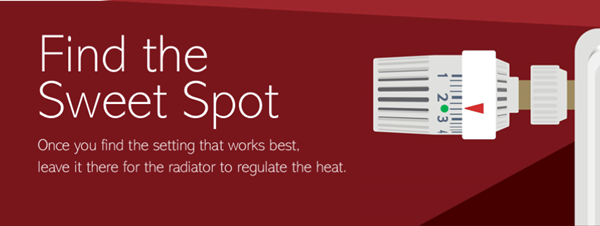- Home
- About
- Student Led
- Research Informed
- Practice Focused
- Resources
- Case Studies
- Green Labs Community
- News
- Office of Sustainability and Climate Action
Reduce Your Use
Week 1

Dear Colleagues,
This week the Reduce Your Use campaign looks specifically at heating controls. Surveys indicate that more than half of us don’t fully understand how best to use the heating controls at work. We want to help you with that.
Have a look below at the Energy Exercise of the Week ‘Find the Sweet Spot’ where we look specifically at Thermostatic Radiator Valves. These heating controls are common in our places of work and also in our homes.
This Webinar explores further the topic of how to get the most from our heating controls. Finally, have a look at this blog from the Office of Public Works (OPW) which shows you how to become a master of controls and save energy this winter!

Lots of our office and home radiators have Thermostatic Radiator Valves (TRVs) to help us maintain the desired space temperature – not too hot and not too cold. The key is finding a setting, the ‘Sweet Spot’, and leaving it there for the radiator to maintain the temperature.
Here's how to do it.
- Start by setting the Thermostatic Radiator Valve between 2 and 3
- If the room is below the desired temperature turn it up half a setting
- If the room is above the desired temperature turn it down half a setting
- Wait at least 1 hour for the room to adjust
Once you find the ‘Sweet Spot’ place a green dot on it.
Thermostatic radiator valves shut off the flow of heat to the radiator when the room gets to the desired temperature. There is a temperature sensor that closes a valve to reduce the flow of hot water in the radiator. When the room cools down, the valve opens and allows heat to flow again. In this way, it maintains the room at the desired temperature.
The numbers, usually 1 to 5, on your thermostatic radiator valve do not correspond to a precise temperature but rather to a level of comfort. You can use the table below as a guide to help you determine which setting might work best for you. Through trial and error, you will find the setting that meets your needs.

Once you have found the setting that works best - the ‘Sweet Spot’ - place a small green dot on the thermostatic radiator valve. This will make it easier for you to check it is set at the ‘Sweet Spot’.
Turning the thermostatic radiator valve up higher or to MAX will not heat your area faster. Resist the temptation to turn it up and down. It's best to find the ‘Sweet Spot’ and leave it there for the radiator to regulate the heat.
